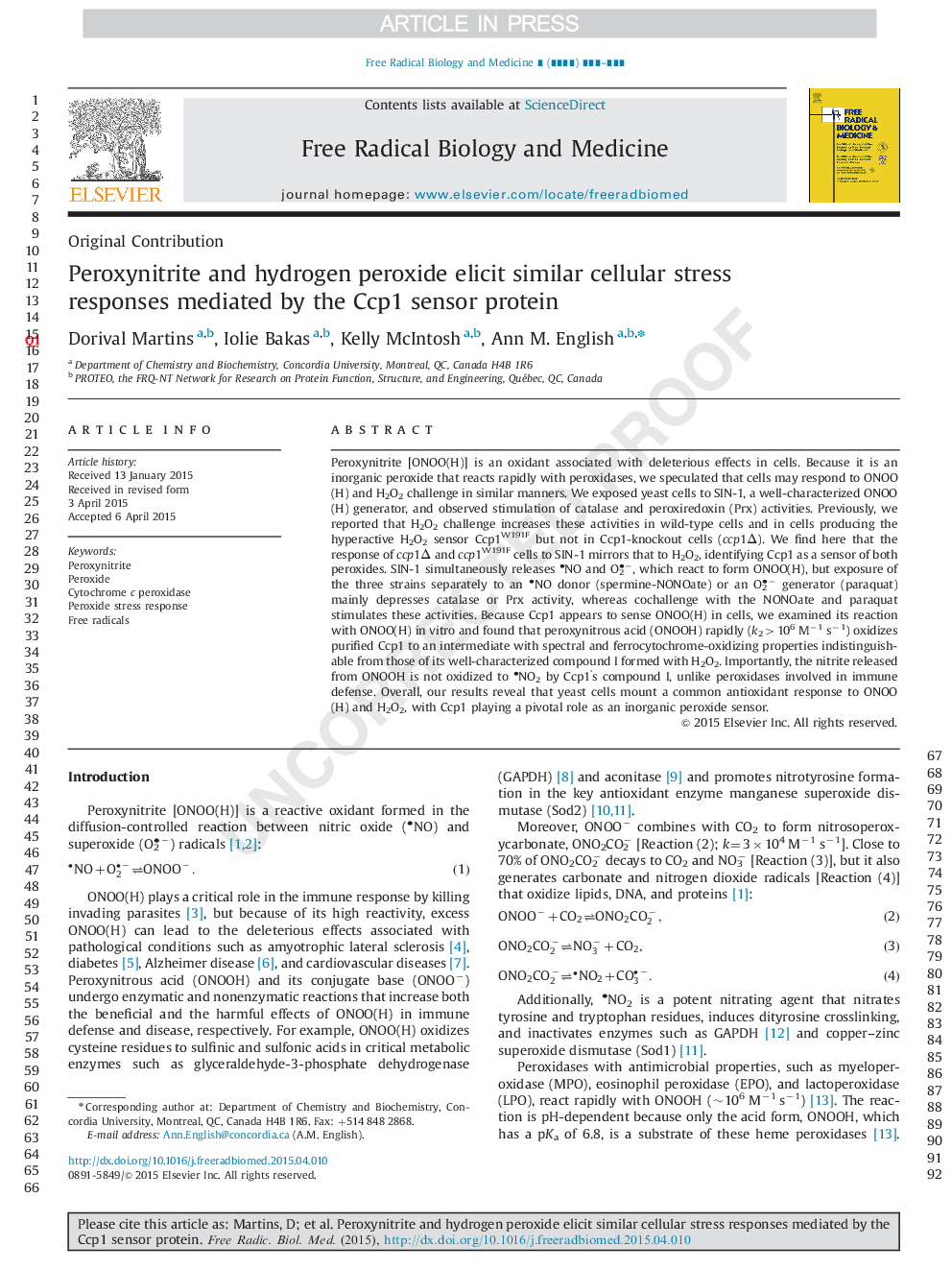| Article ID | Journal | Published Year | Pages | File Type |
|---|---|---|---|---|
| 8269061 | Free Radical Biology and Medicine | 2015 | 10 Pages |
Abstract
Peroxynitrite [ONOO(H)] is an oxidant associated with deleterious effects in cells. Because it is an inorganic peroxide that reacts rapidly with peroxidases, we speculated that cells may respond to ONOO(H) and H2O2 challenge in a similar manner. We exposed yeast cells to SIN-1, a well-characterized ONOO(H) generator, and observed stimulation of catalase and peroxiredoxin (Prx) activities. Previously, we reported that H2O2 challenge increases these activities in wild-type cells and in cells producing the hyperactive mutant H2O2 sensor Ccp1W191F but not in Ccp1-knockout cells (ccp1Î). We find here that the response of ccp1Î and ccp1W191F cells to SIN-1 mirrors that to H2O2, identifying Ccp1 as a sensor of both peroxides. SIN-1 simultaneously releases
- NO and O2
- â, which react to form ONOO(H), but exposure of the three strains separately to an
- NO donor (spermine-NONOate) or an O2
- â generator (paraquat) mainly depresses catalase or Prx activity, whereas co-challenge with the NONOate and paraquat stimulates these activities. Because Ccp1 appears to sense ONOO(H) in cells, we examined its reaction with ONOO(H) in vitro and found that peroxynitrous acid (ONOOH) rapidly (k2>106Â Mâ1Â sâ1) oxidizes purified Ccp1 to an intermediate with spectral and ferrocytochrome-oxidizing properties indistinguishable from those of its well-characterized compound I formed with H2O2. Importantly, the nitrite released from ONOOH is not oxidized to
- NO2 by Ccp1׳s compound I, unlike peroxidases involved in immune defense. Overall, our results reveal that yeast cells mount a common antioxidant response to ONOO(H) and H2O2, with Ccp1 playing a pivotal role as an inorganic peroxide sensor.
- NO and O2
- â, which react to form ONOO(H), but exposure of the three strains separately to an
- NO donor (spermine-NONOate) or an O2
- â generator (paraquat) mainly depresses catalase or Prx activity, whereas co-challenge with the NONOate and paraquat stimulates these activities. Because Ccp1 appears to sense ONOO(H) in cells, we examined its reaction with ONOO(H) in vitro and found that peroxynitrous acid (ONOOH) rapidly (k2>106Â Mâ1Â sâ1) oxidizes purified Ccp1 to an intermediate with spectral and ferrocytochrome-oxidizing properties indistinguishable from those of its well-characterized compound I formed with H2O2. Importantly, the nitrite released from ONOOH is not oxidized to
- NO2 by Ccp1׳s compound I, unlike peroxidases involved in immune defense. Overall, our results reveal that yeast cells mount a common antioxidant response to ONOO(H) and H2O2, with Ccp1 playing a pivotal role as an inorganic peroxide sensor.
Related Topics
Life Sciences
Biochemistry, Genetics and Molecular Biology
Ageing
Authors
Dorival Martins, Iolie Bakas, Kelly McIntosh, Ann M. English,
